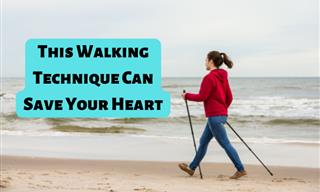The widely held belief that people must reach a 10,000-step daily goal to improve their health is being challenged by new research. A recent study published in the European Journal of Preventive Cardiology suggests that walking as few as 4,000 steps per day is correlated with a decreased risk of death.

The findings of this study combined data from 17 research projects conducted in six countries, examining the positive health effects linked to step counts. Even individuals with the lowest activity levels, averaging approximately 4,000 steps daily, showed a decreased likelihood of death from any cause. Additionally, the risk of mortality decreased further with higher step counts.
Related: 10,000 Steps or Walking Fast – Which is More Beneficial?
The study indicated that taking an extra 1,000 steps every day reduced the risk of death by 15%. The researchers also investigated the effects of walking up to 20,000 steps a day, which is roughly equivalent to 9-10 miles for the average person.
Across all categories examined, no reduction in effect or risk saturation point was observed. However, they emphasized that the existing data for those who walked these high-step counts remained limited, necessitating future detailed examinations. Notably, when compared to their older counterparts, younger persons showed a greater decline in total mortality risk.
“The main message is that we should have as many steps as possible and we should start as early as possible in order to have the highest health benefits,” said Dr. Maciej Banach, the study’s lead author and a cardiology professor at the Medical University of Lodz in Poland.

His team examined about 227,000 participants in all, the majority of whom were relatively healthy, and followed people for an average of seven years. Australia, Japan, Norway, Spain, the United Kingdom, and the United States were among those who took part.
When the researchers looked specifically at the chance of dying from cardiovascular disease, they discovered that walking at least 2,337 steps per day reduced the risk, with each additional 500 daily steps associated with an additional 7% reduction in risk.
Related: 10 Common Walking Mistakes You MUST Avoid
According to the study, walking between 7,000 and 13,000 steps per day reduced the overall risk of death by 49% in people under the age of 60. Meanwhile, walking 6,000 to 10,000 steps per day reduced the risk by 42% in people aged 60 and up.
The Risks of a Sedentary Lifestyle
Reliable studies consistently indicate that engaging in sedentary behavior, characterized by taking less than 5,000 steps daily, substantially increases the likelihood of all-cause mortality and various chronic ailments. These include cardiovascular disease (CVD), cancer, type 2 diabetes (T2D), and high blood pressure (hypertension).

At the same time, many previous studies have demonstrated that walking improves cardiovascular well-being and minimizes the likelihood of developing conditions such as cancer, diabetes, and dementia. Per the Department of Health and Human Services, an average adult should aim for 150 to 300 minutes per week of moderate physical activity such as bicycling, or 75 to 150 minutes of vigorous physical activity like jogging or running, or a combination of both. The guidelines further advocate engaging in muscle-strengthening exercises at least twice weekly.
Related: Here’s Why You Must Try Mindful Walking Regularly
To stay active, you should strive to raise your heart rate to at least slightly elevated levels - which means you should be able to speak but not sing. A brisk walk or uphill hike meets this criteria, though experts say daily steps are usually considered light physical activity, so they would not be included in the federal guidelines.
 Go to BabaMail
Go to BabaMail





















































